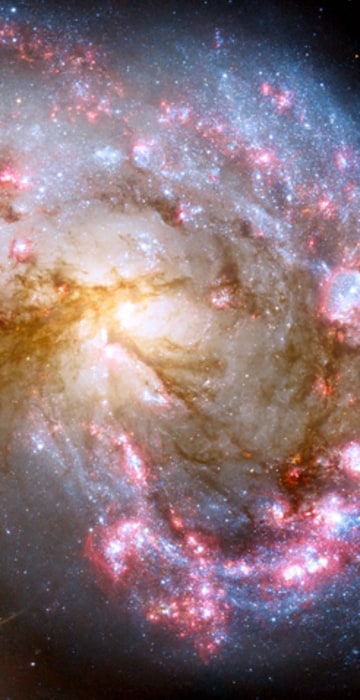
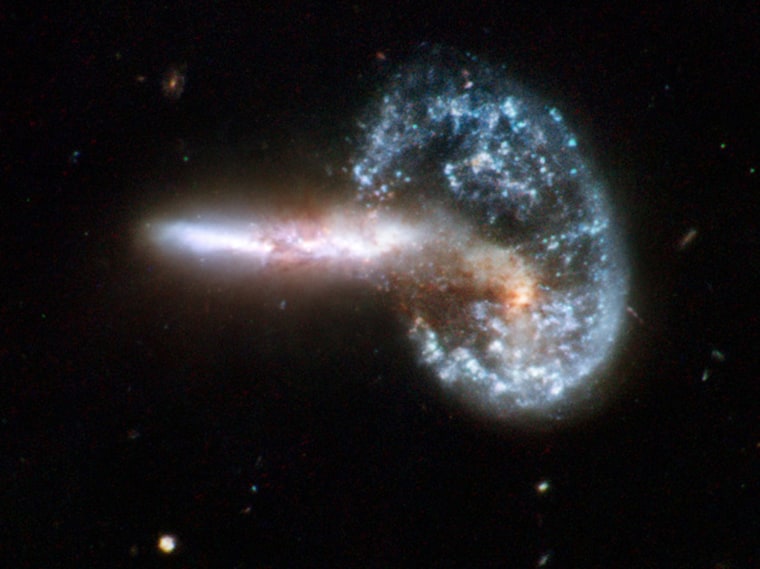
Happy birthday, Hubble!
The Hubble Space Telescope is celebrating its 20th birthday and we have some images taken by the iconic space observatory over the past two decades. Arp 148, shown here, is the staggering aftermath of an encounter between two galaxies, resulting in a ring-shaped galaxy and a long-tailed companion. This image is part of a collection of 59 images of merging galaxies taken by Hubble and released on its 18th anniversary.
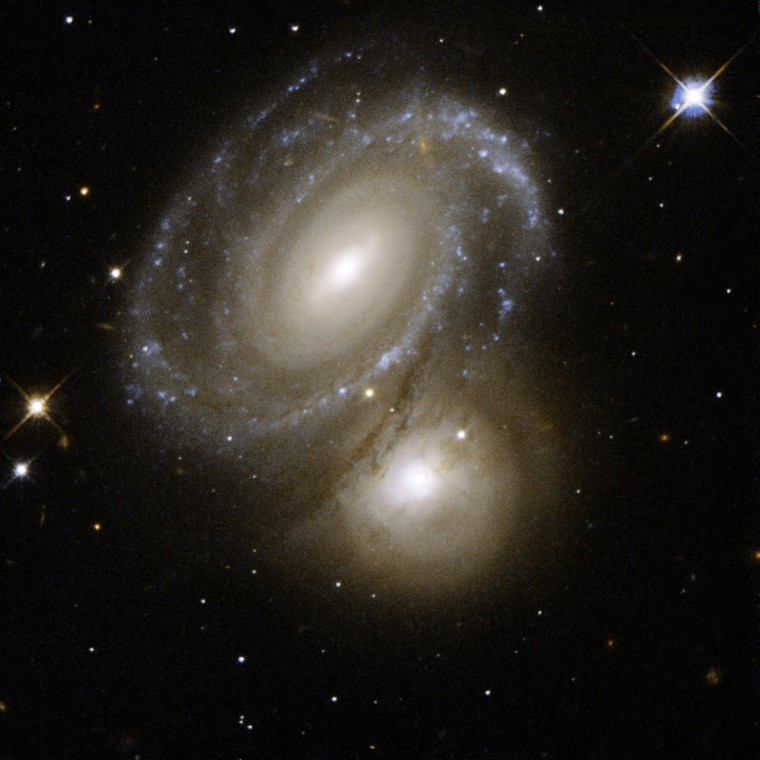
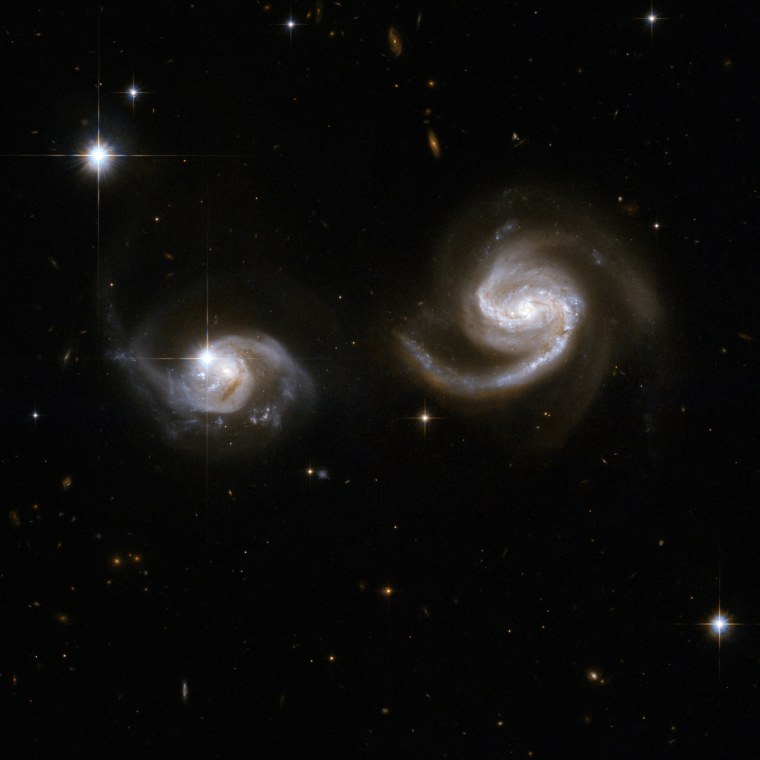
Galactic duet
This Hubble image displays a beautiful pair of interacting spiral galaxies with swirling arms. The smaller of the two, dubbed LEDA 62867 and positioned to the left of the frame, seems to be safe for now, but will probably be swallowed by the larger spiral galaxy, NGC 6786 (to the right) eventually.
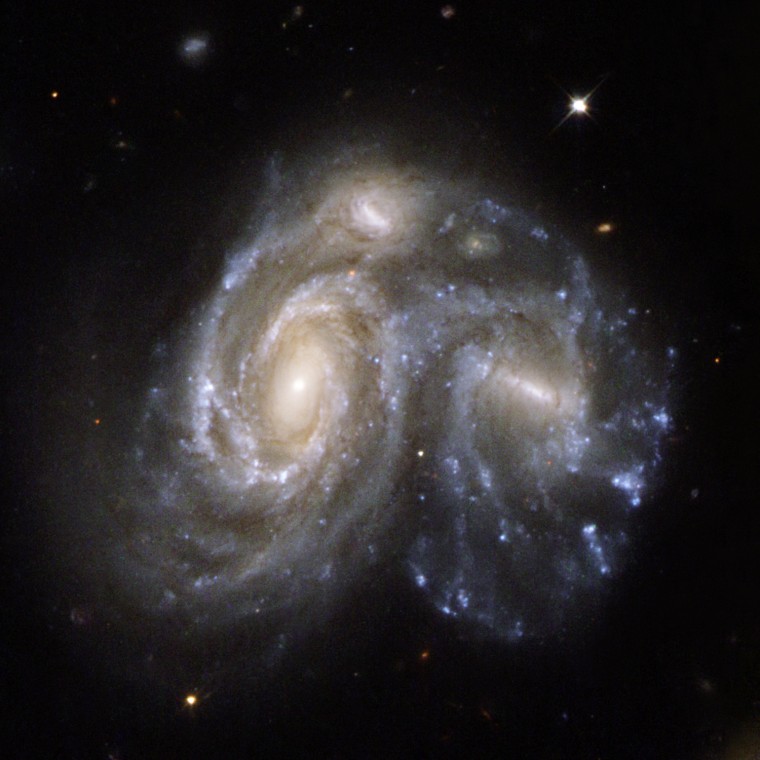
Spiraling galaxies
This image shows a Hubble view of Arp 272, a remarkable collision between two spiral galaxies, NGC 6050 and IC 1179. The galaxy cluster is part of the Great Wall of clusters and superclusters, the largest known structure in the Universe. The two spiral galaxies are linked by their swirling arms.

Tail of stars
NGC 520 is the product of a collision between two disk galaxies that started 300 million years ago. It exemplifies the middle stages of the merging process: the disks of the parent galaxies have merged together, but the nuclei have not yet coalesced. It features an odd-looking tail of stars and a prominent dust lane that runs diagonally across the center of the image and obscures the galaxy.
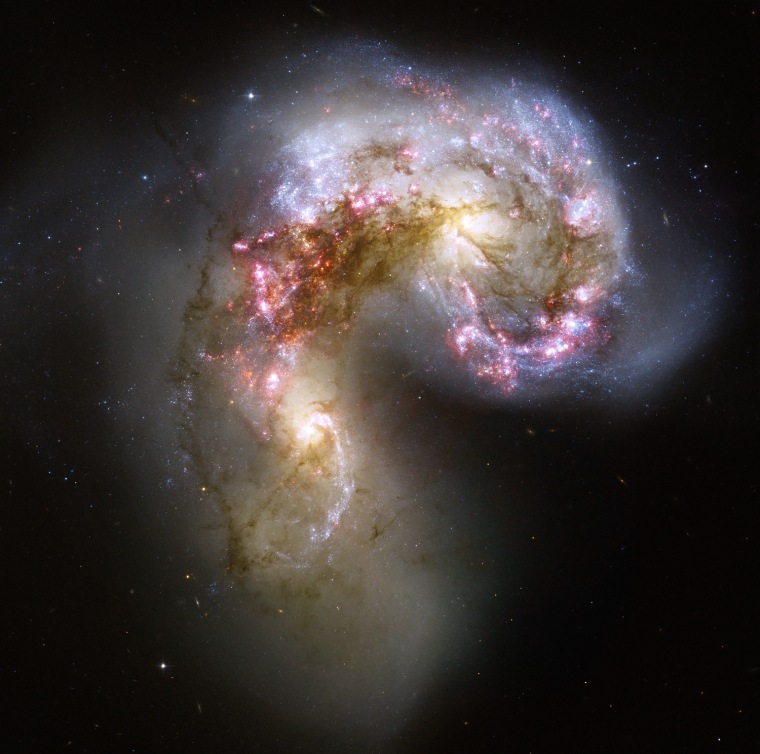
Galactic merger
This is the sharpest image yet from the Hubble Space Telescope of the merging Antennae galaxies. As the two galaxies smash together, billions of stars are born, mostly in groups and clusters of stars. The brightest and most compact of these are called super star clusters.
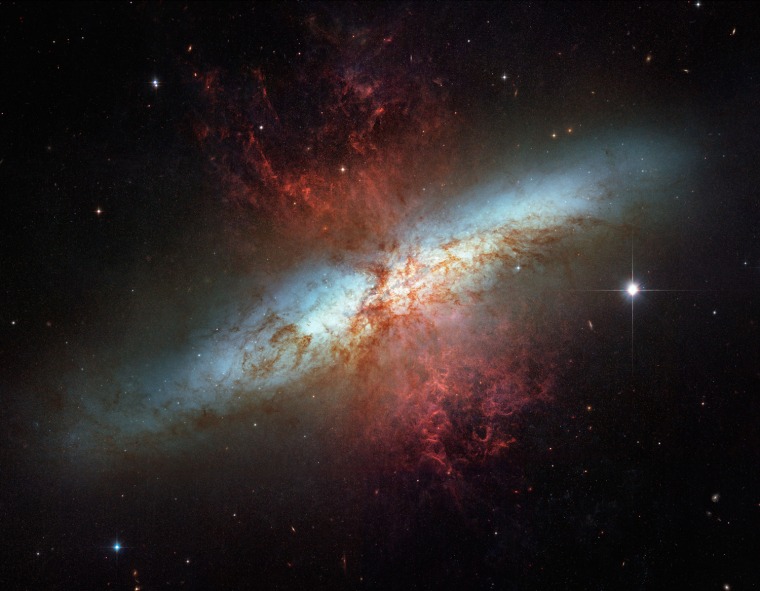
Starburst galaxy
This photo of the starburst galaxy, Messier 82 (M82) is the sharpest wide-angle view ever obtained of M82, a galaxy remarkable for its webs of shredded clouds and flame-like plumes of glowing hydrogen blasting out from its central regions. Located 12 million light-years away, it is also called the "Cigar Galaxy" because of the elongated elliptical shape produced by the tilt of its starry disk relative to our line of sight.
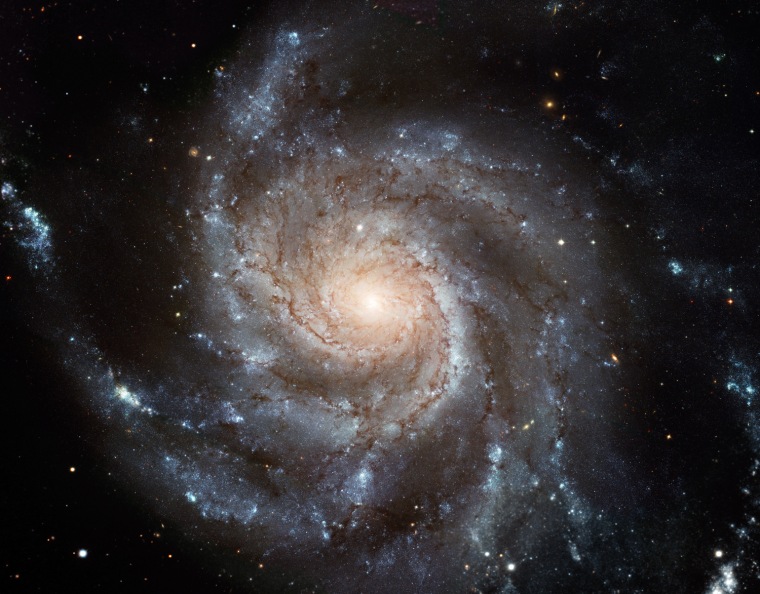
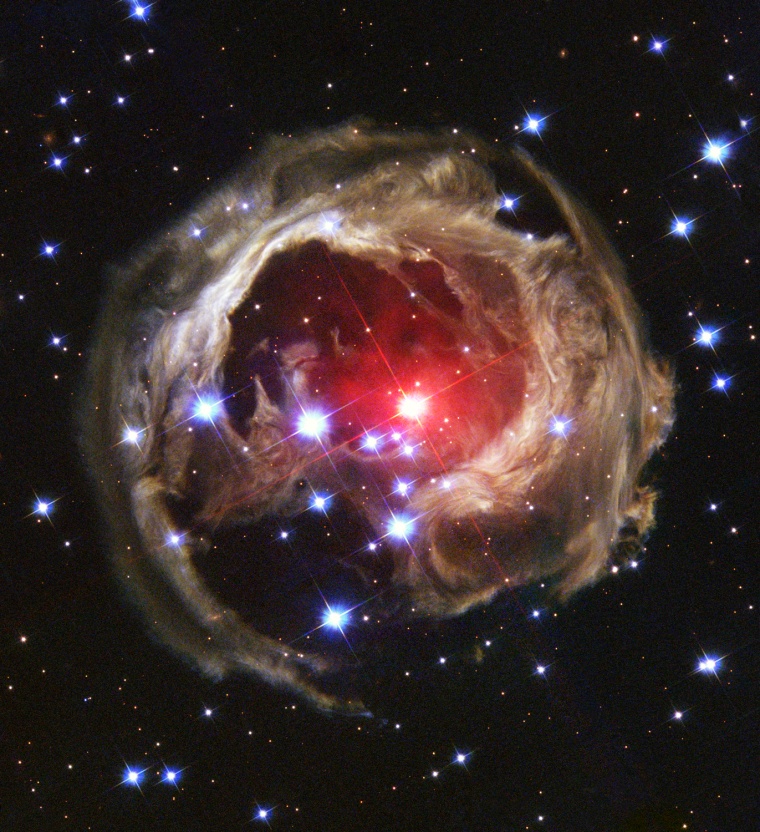
A starry night
This image bears remarkable similarities to the Vincent van Gogh work, "Starry Night" complete with never-before-seen spirals of dust swirling across trillions of kilometres of interstellar space. The Advanced Camera for Surveys is Hubble's latest view of an expanding halo of light around a distant star, named V838 Monocerotis (V838 Mon). V838 Mon is located about 20,000 light-years away from Earth in the direction of the constellation Monoceros, placing the star at the outer edge of our Milky Way galaxy.
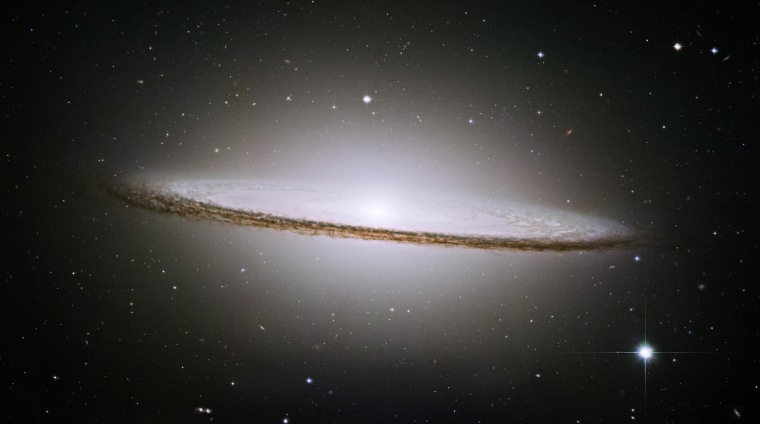
A brilliant white
NASA's Hubble Space Telescope trained its eye on one of the universe's most stately and photogenic galaxies, the Sombrero galaxy with the space telescope's Advanced Camera for Surveys , in May-June 2003 . The image of the galaxy's hallmark brilliant white, bulbous core is encircled by the thick dust lanes comprising the spiral structure of the galaxy.
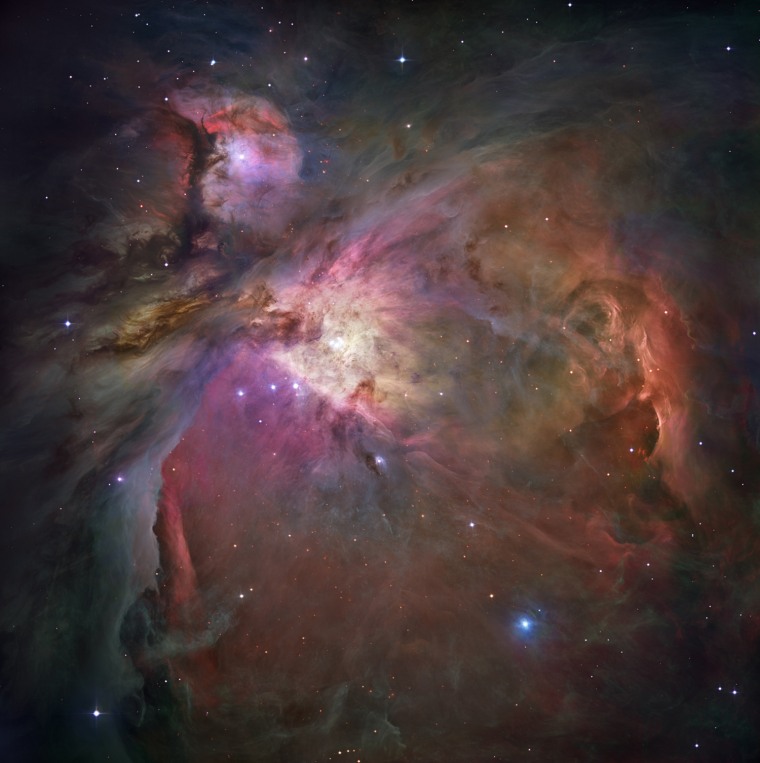
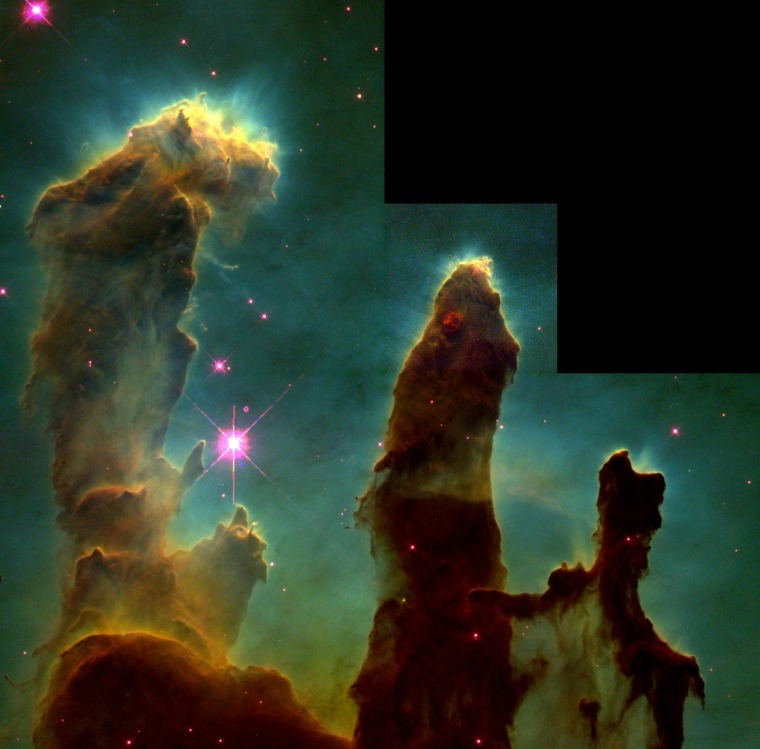
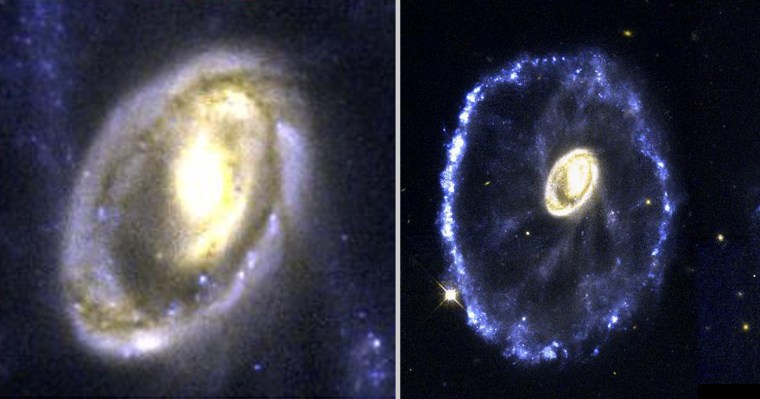
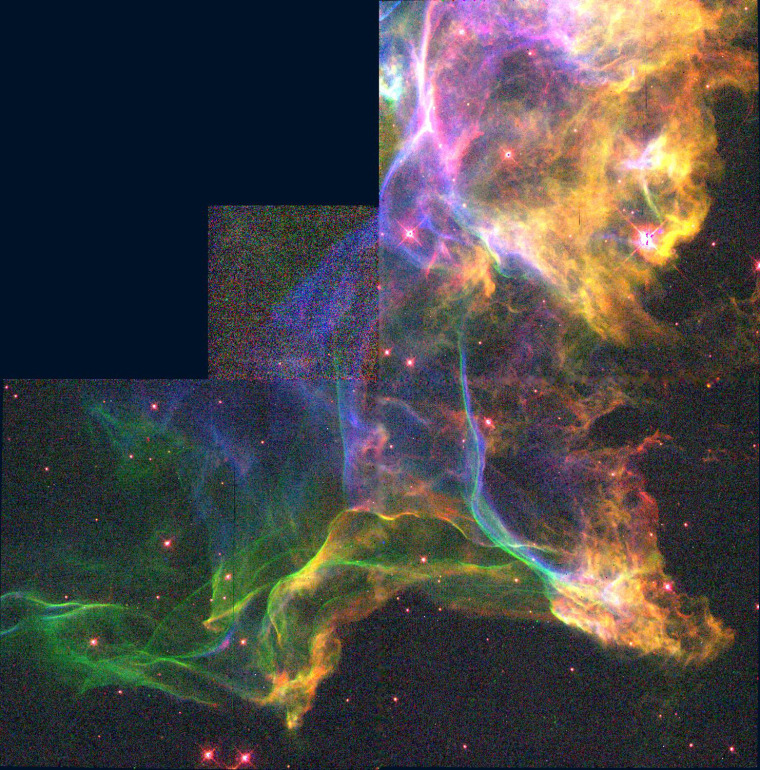
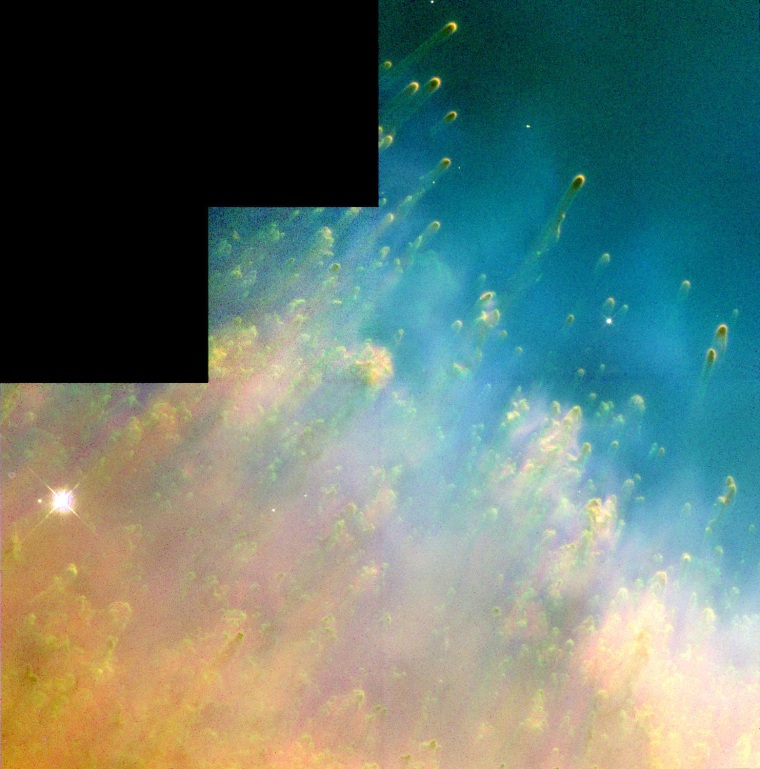
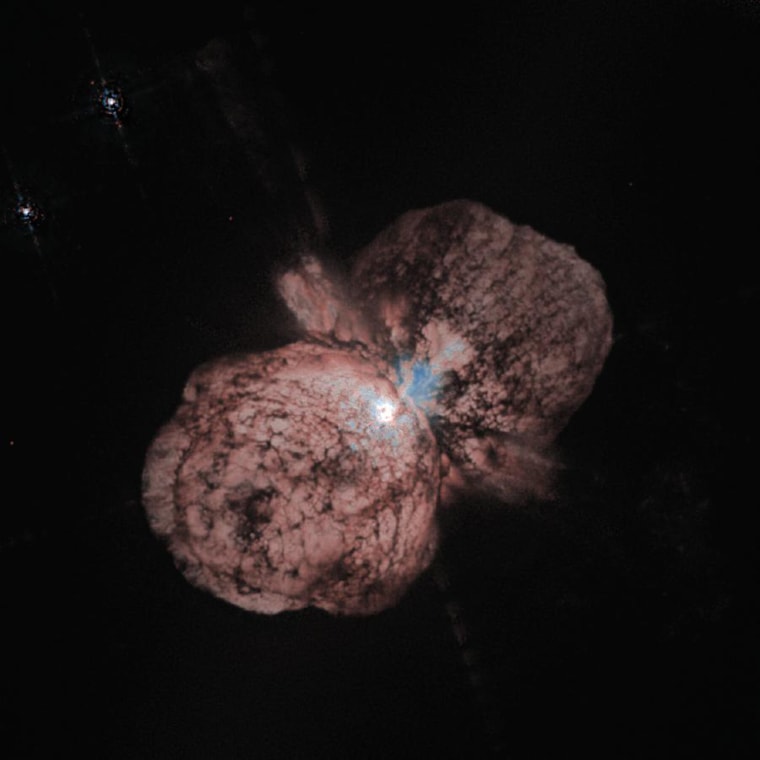
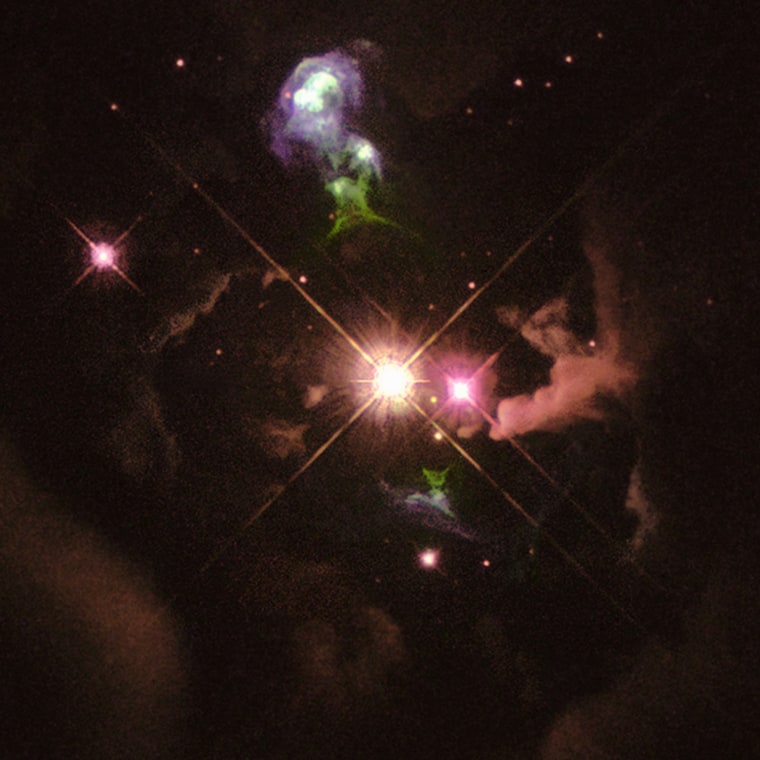
Clouds of glory
HH 32 is an excellent example of a "Herbig-Haro object," which is formed when young stars eject jets of material back into interstellar space. The jets plow into the surrounding nebula, producing strong shock waves that heat the gas and cause it to glow in different colors.
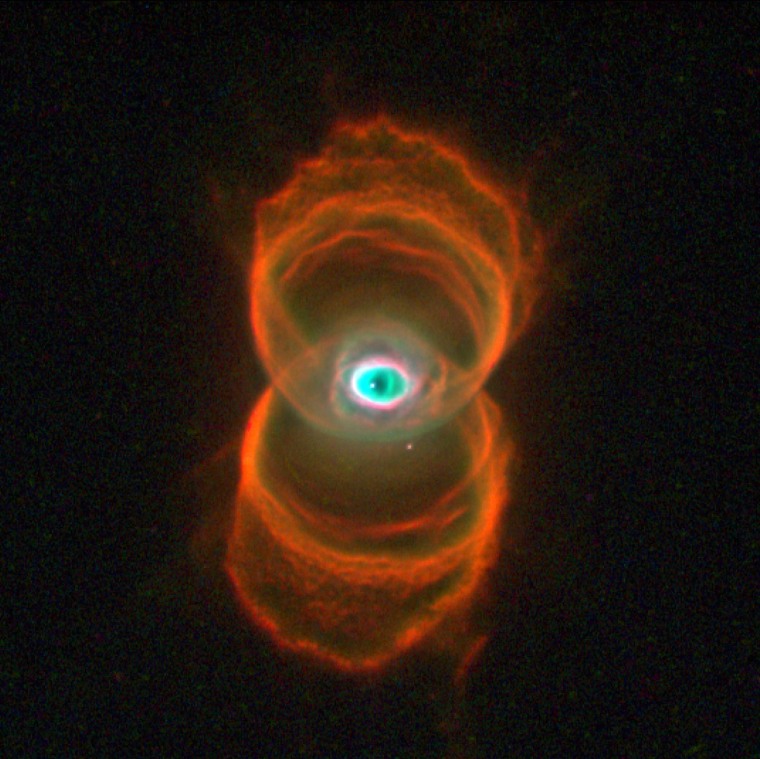
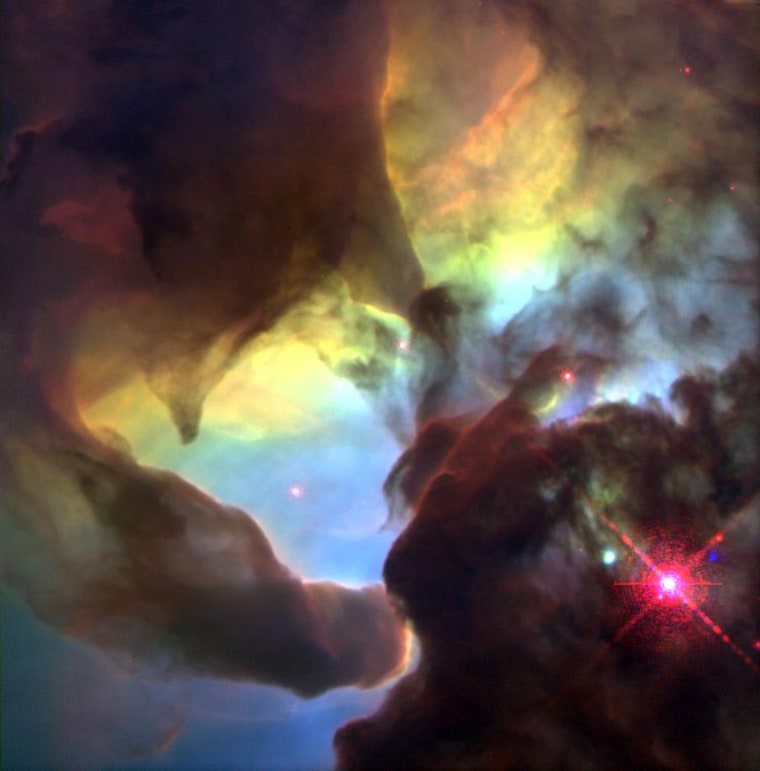

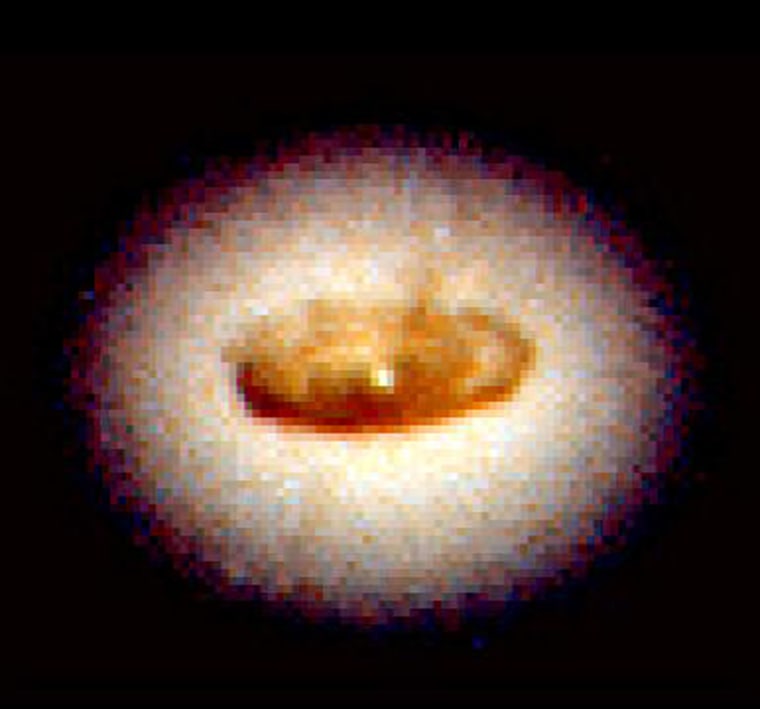
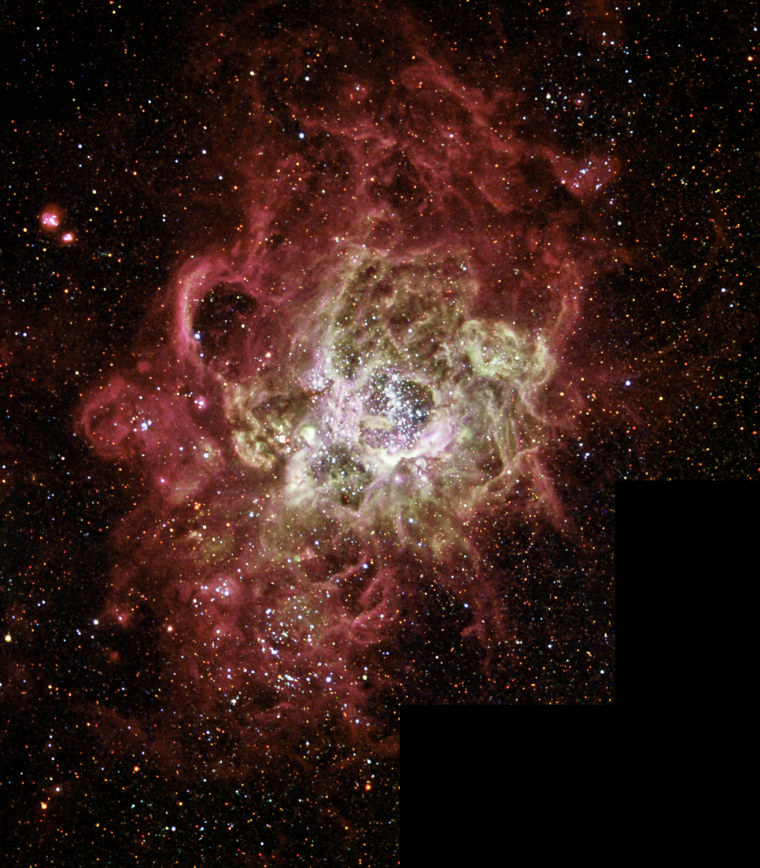

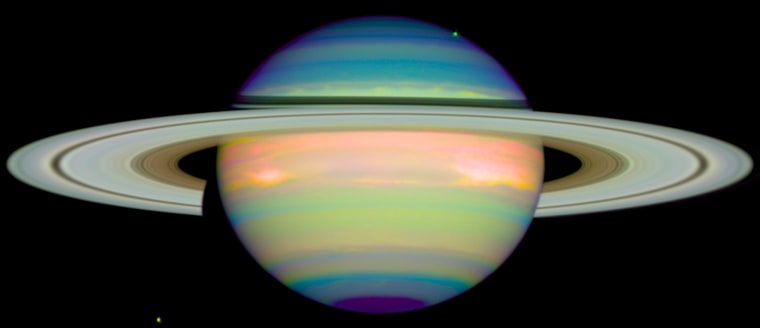
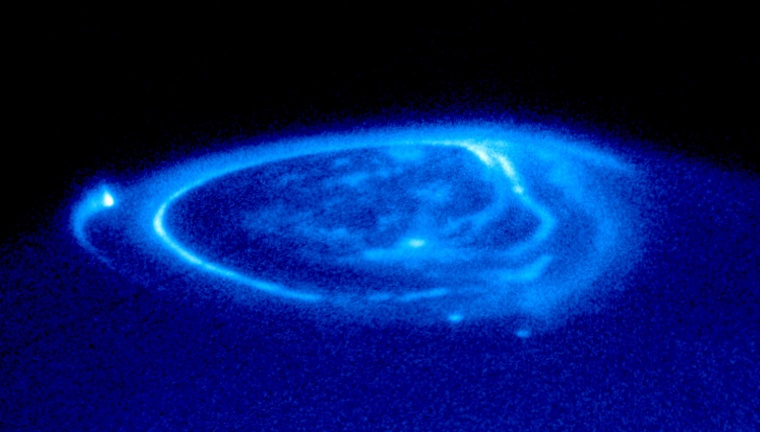
Jupiter's aurora
A curtain of glowing gas is wrapped around Jupiter's north pole like a lasso in a Hubble Space Telescope image captured in 1998. The curtain of light, called an aurora, is produced when high-energy electrons race along the planet's magnetic field and into the upper atmosphere. The electrons excite atmospheric gases, causing them to glow. A similar aurora crowns Earth's polar regions.
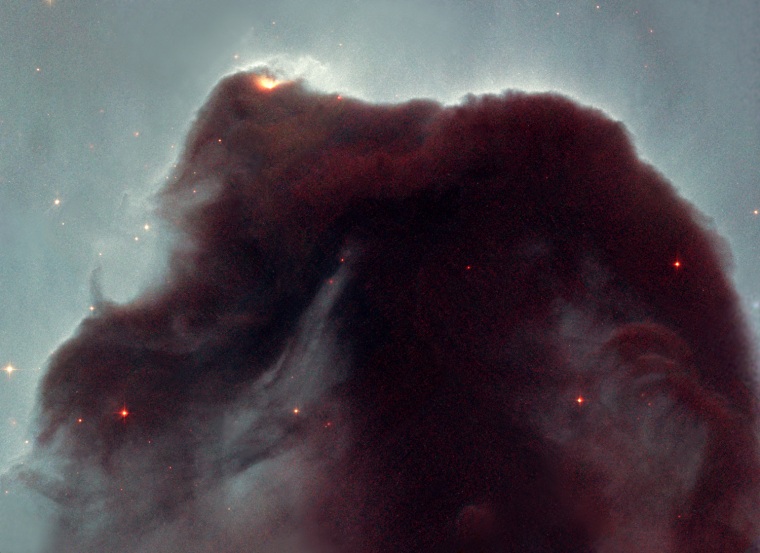
Cosmic Horsehead
The Horsehead Nebula is one of the most photographed objects in the sky. The Hubble Space Telescope took a close-up look at this heavenly icon, revealing the cloud's intricate structure. This view of the horse's head was released April 24, 2001, to celebrate the observatory's 11th anniversary. Hubble was launched by the shuttle Discovery on April 24, 1990.